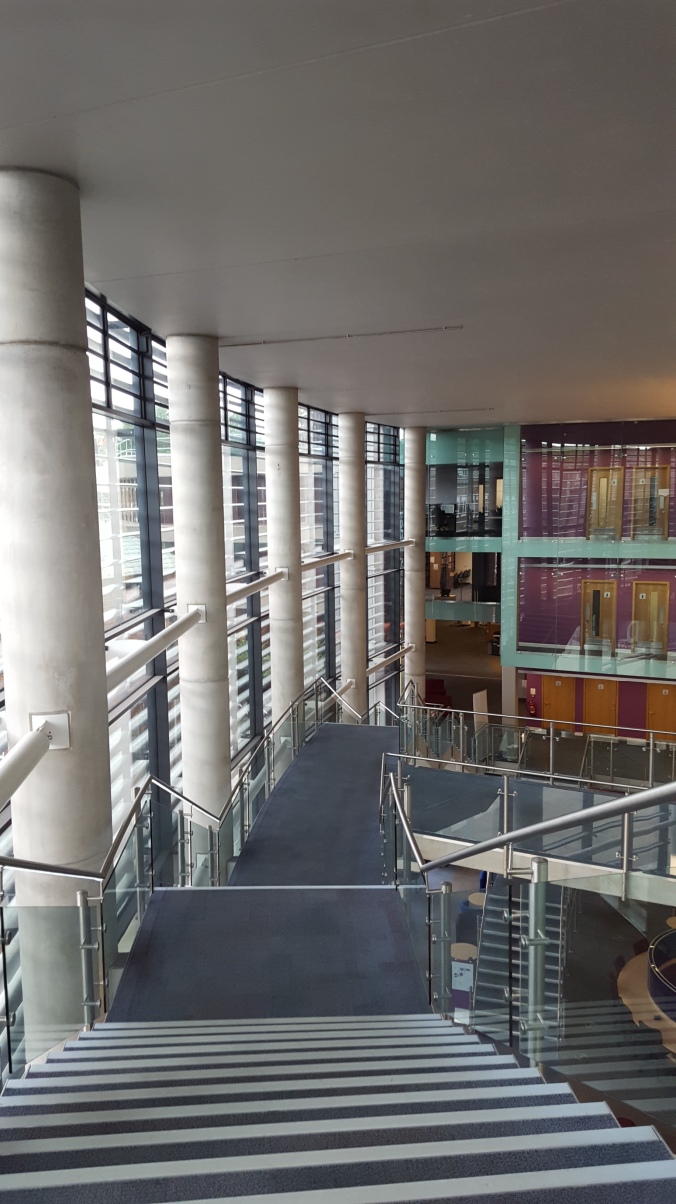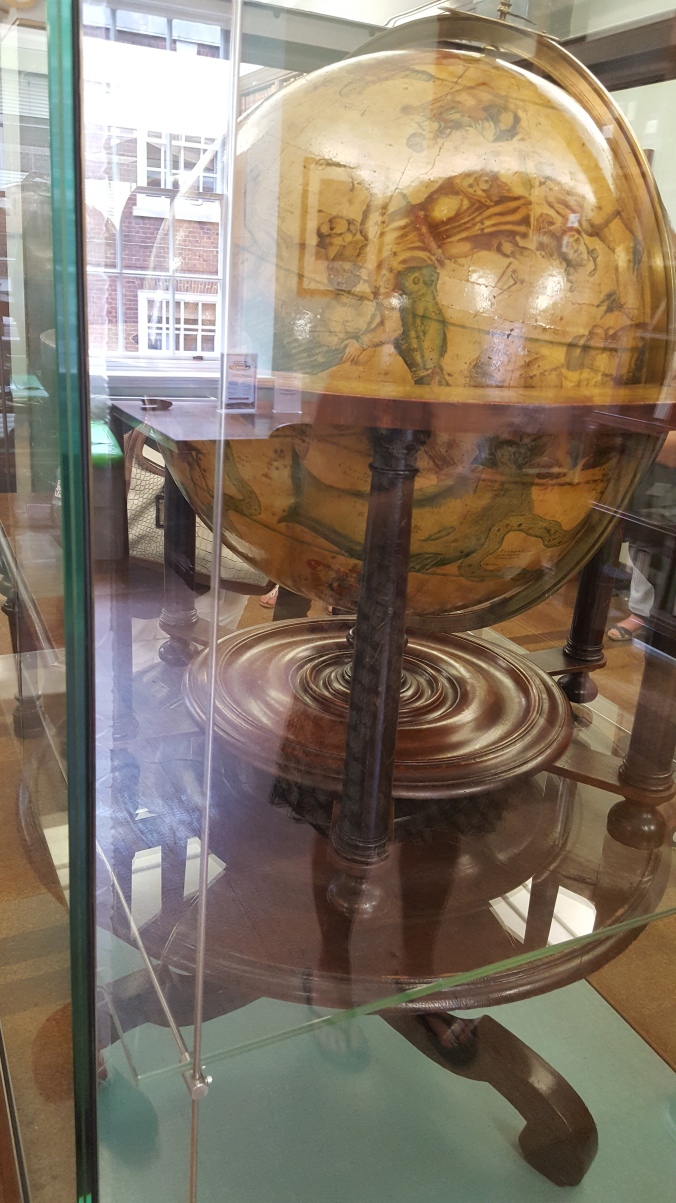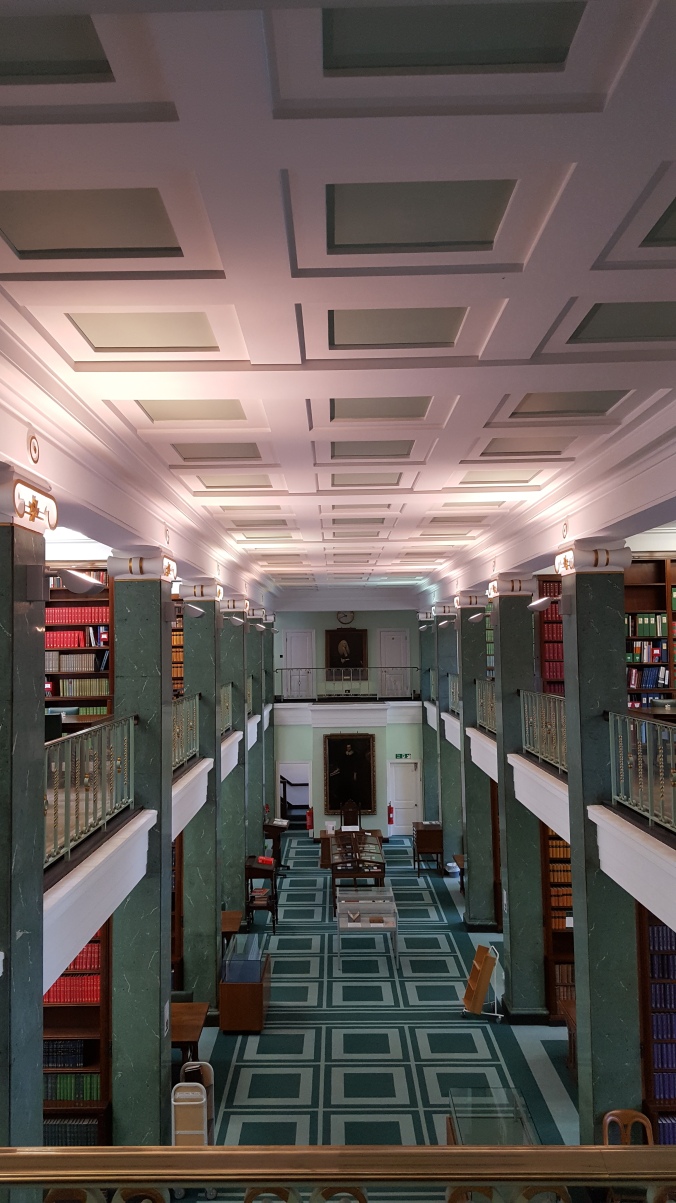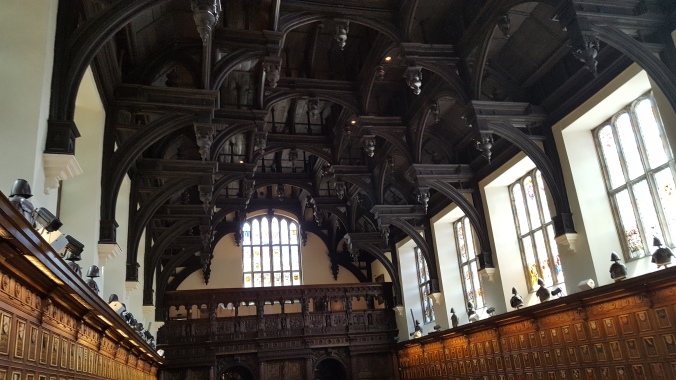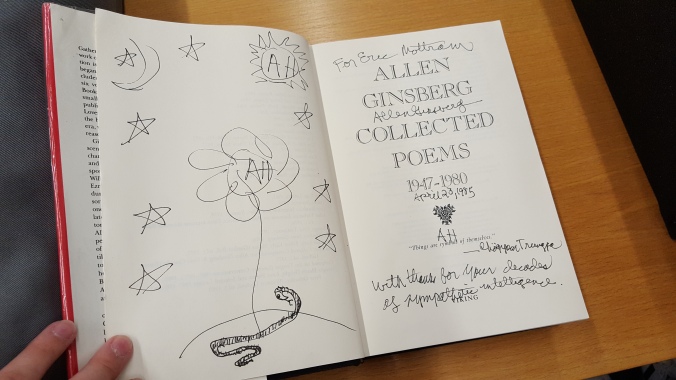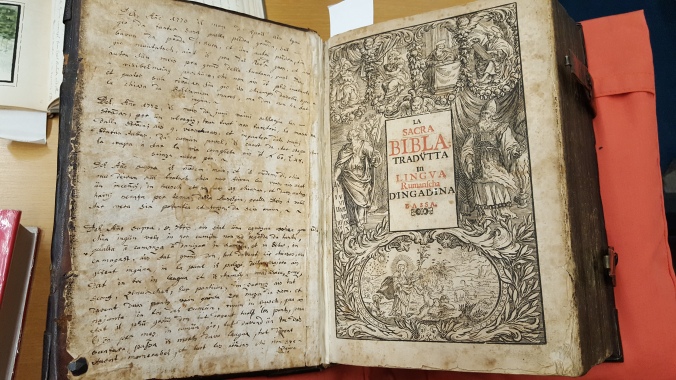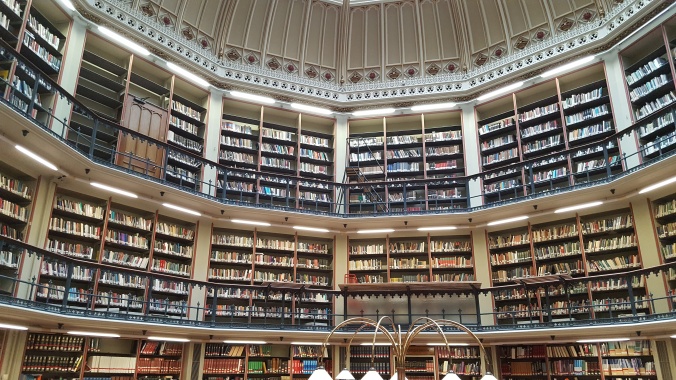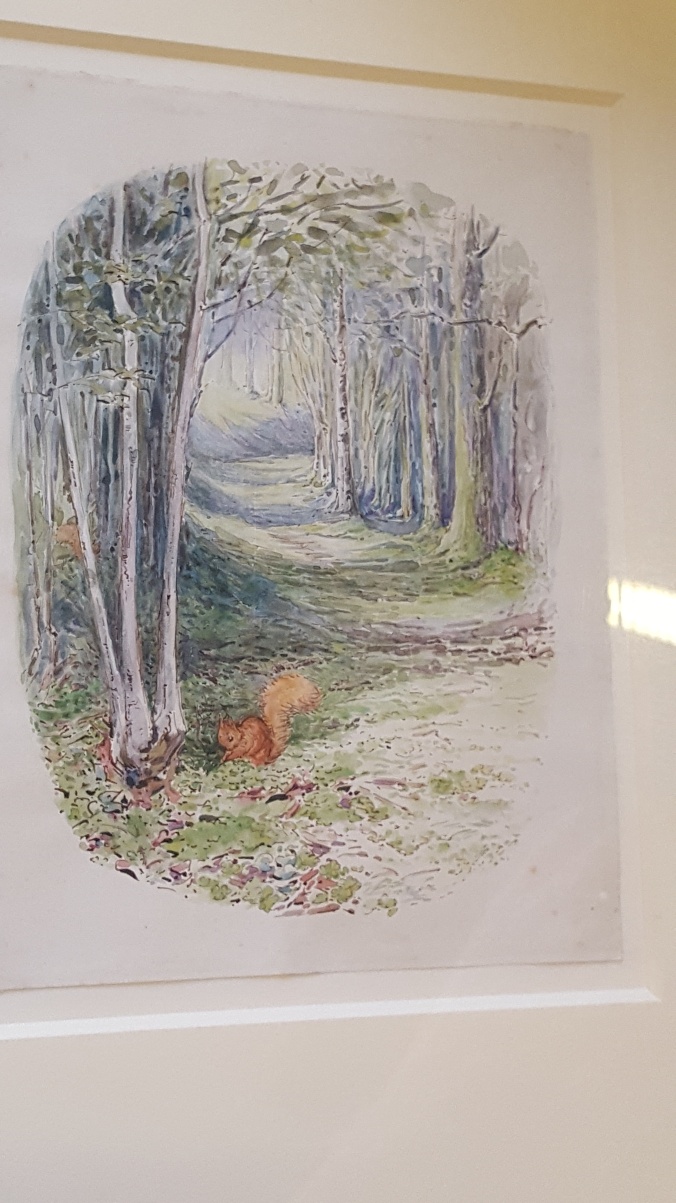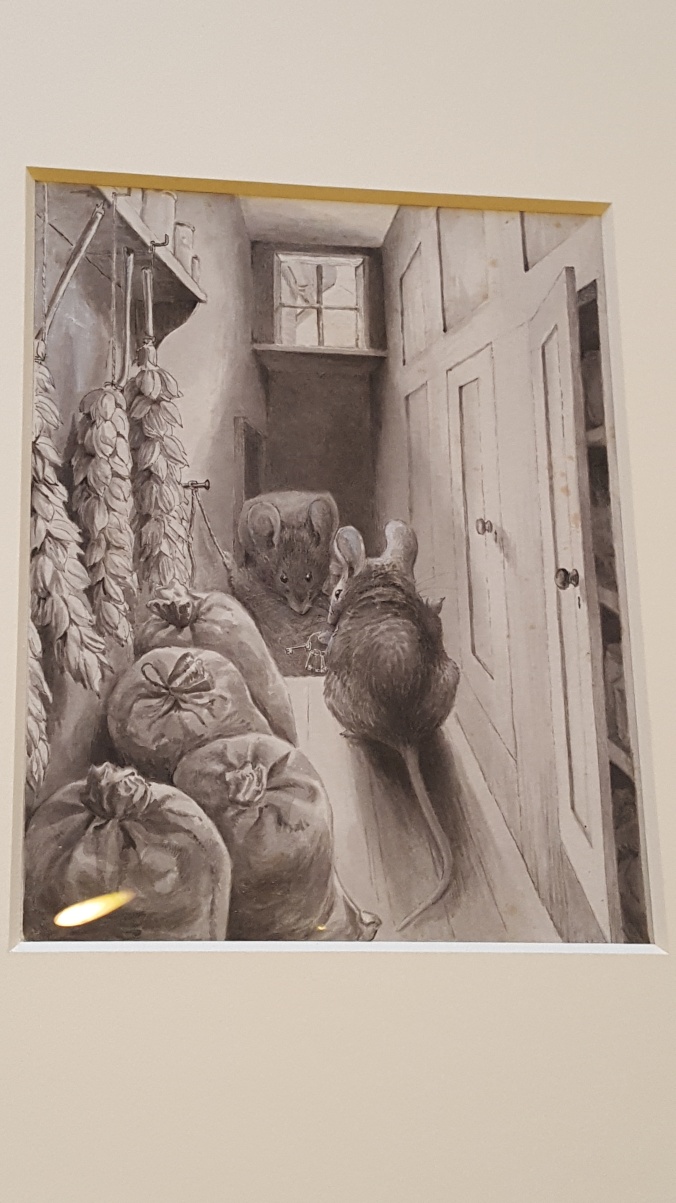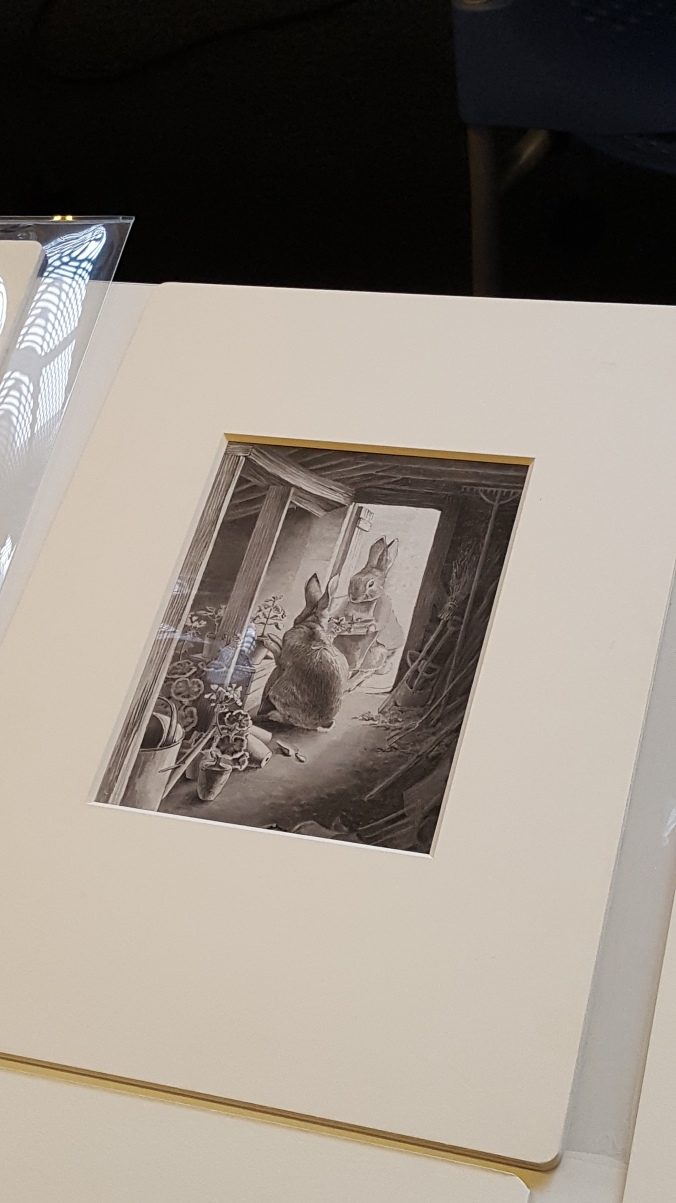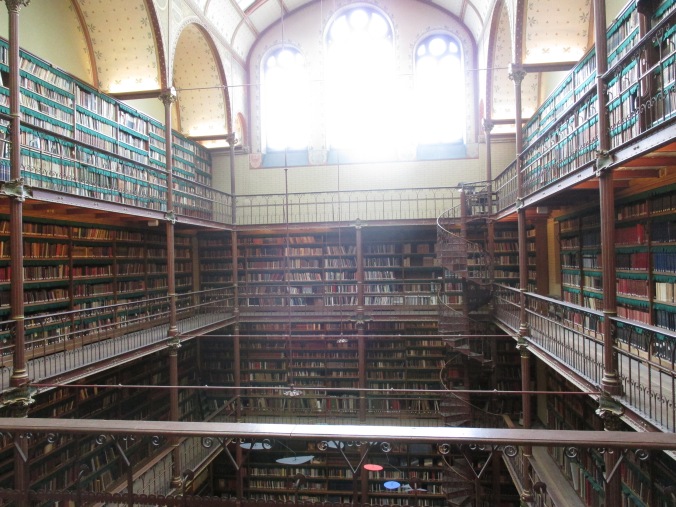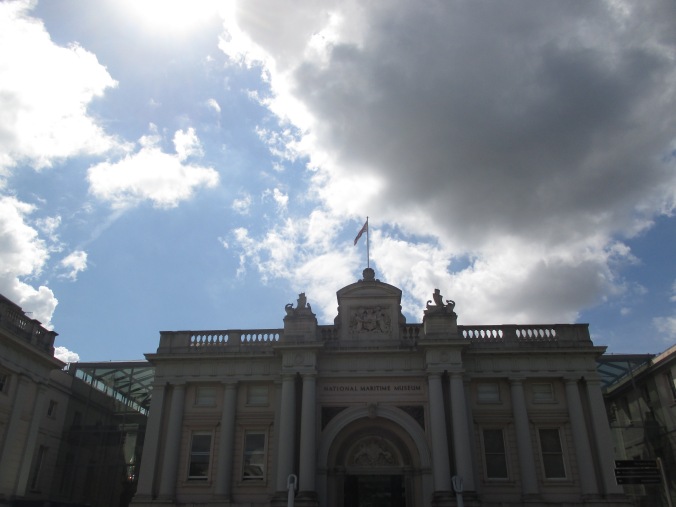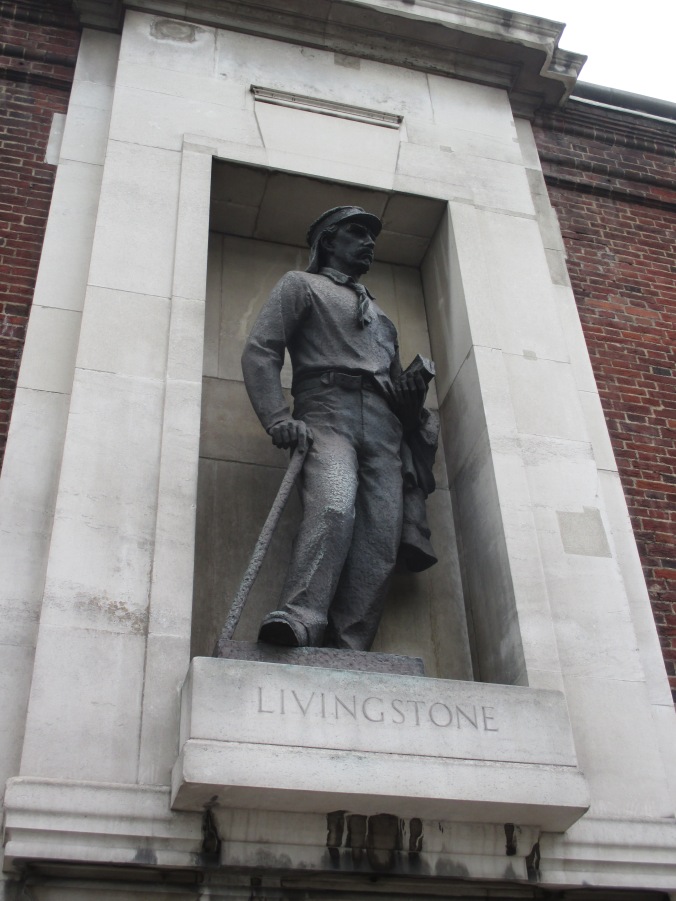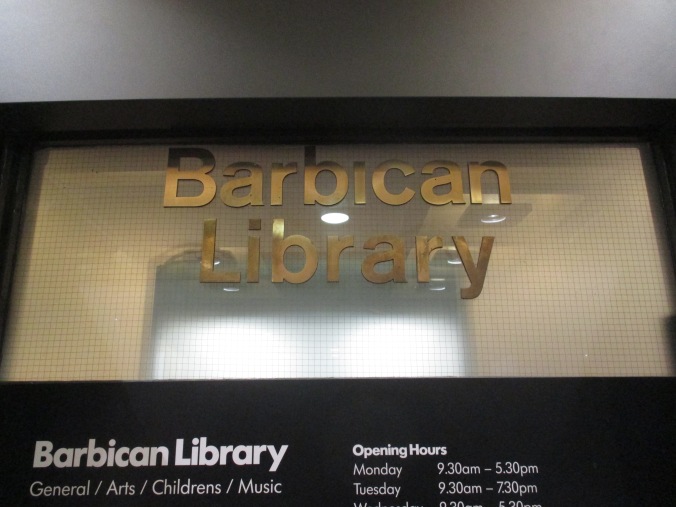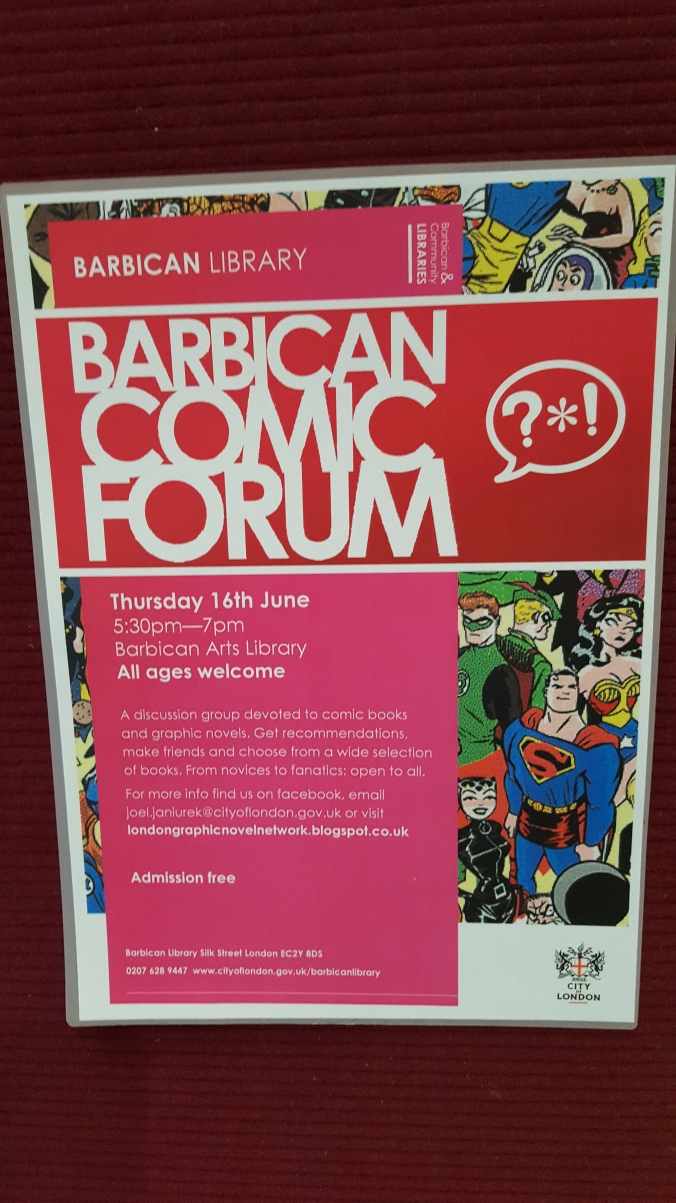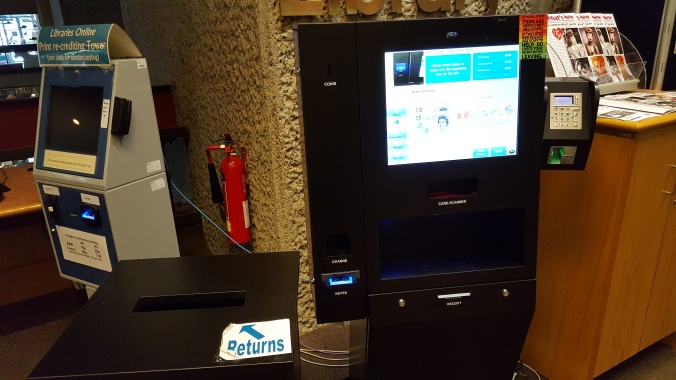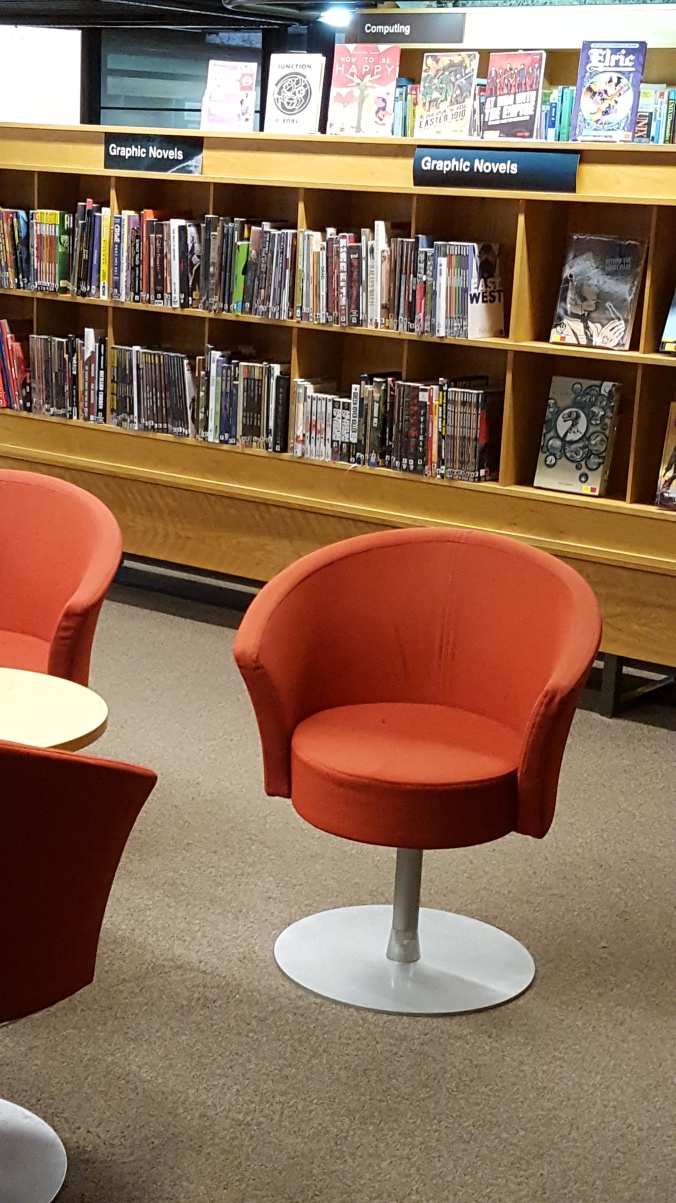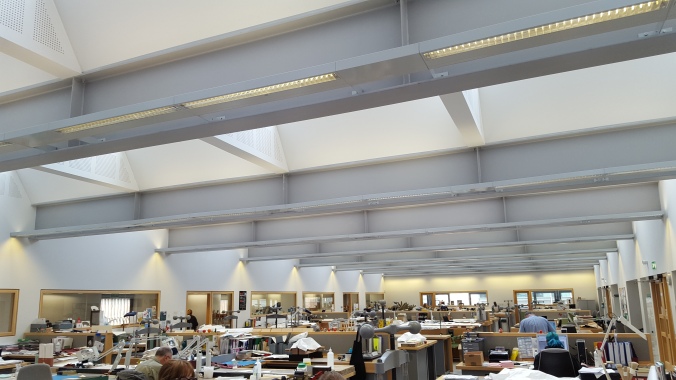Our first full day in Edinburgh was chock full of library visits. The first tour commenced at the Central Library-a public library founded in 1890. The library itself was beautiful and airy with high ceilings and plenty of light.
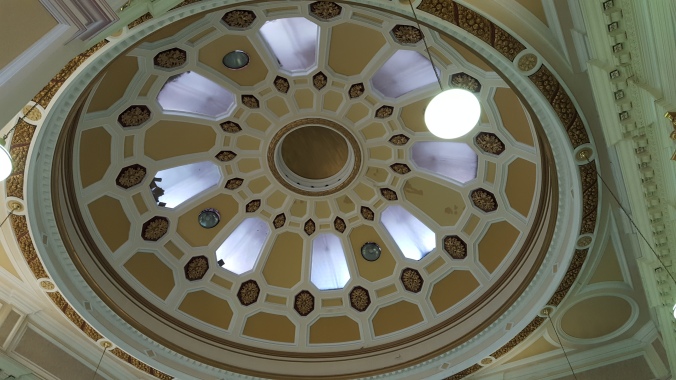
That ceiling!
I felt very much at home in this library because it so closely relates to my current library position. I once again marveled at the self-checkout machines and was completely surprised to learn that they still have a working card catalog!
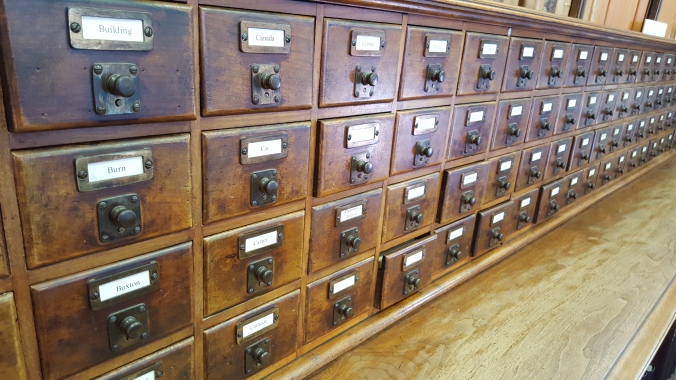
So many little drawers, so little time
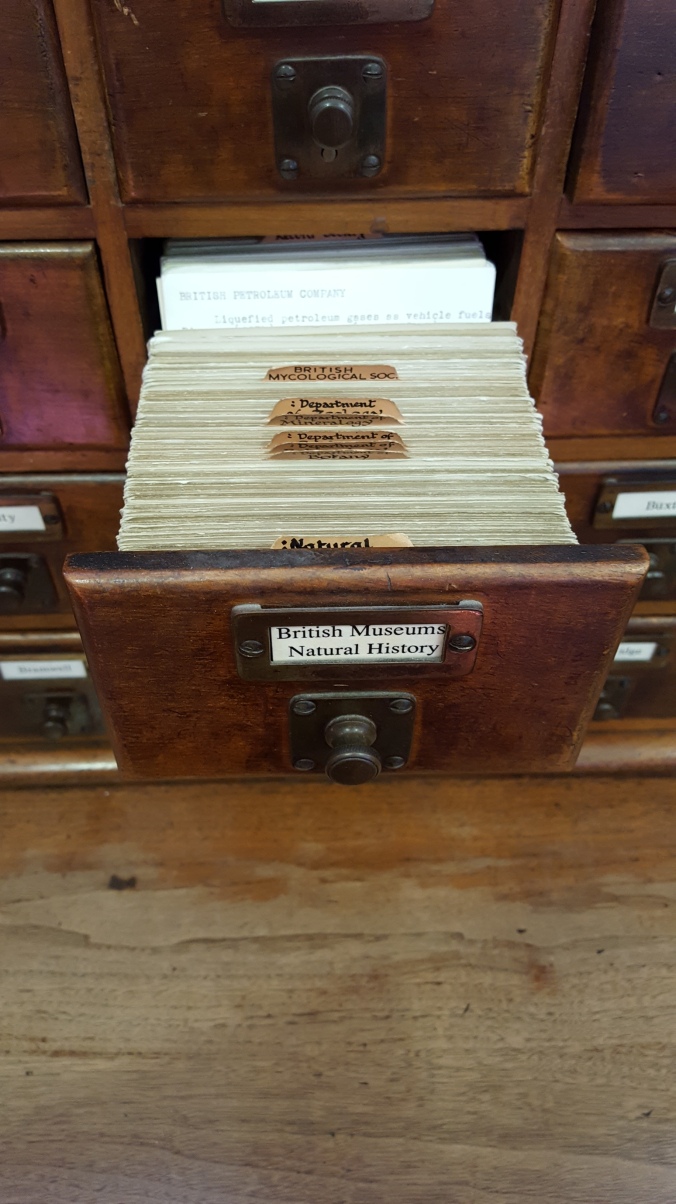
Hey! I’ve been there!
As we walked around the main building, I noticed that, like the Barbican Centre Library, the Central Library also has well-placed signage. It was incredibly easy to follow. I was intrigued to notice that this library uses the Library of Congress classification system. I personally had never seen this used in any public library before.
The Central Library also has a separate music library and children’s library. The children’s library was chaotic due to a program. It was very good to see that so many people wanted to participate in their programs. While we were waiting for our guide earlier in the day, I overheard several people asking to sign up for the program only to be told that it was already filled up. It’s very popular!
The music library reminded me very much of my local, laid-back record store. It honestly felt more like a place to hang and listen to music rather than a library. I was impressed by the fact that the library helps promote for local bands and shows. There were many posters hanging on the wall that advertised gigs, bands, as well as notices asking for new band members. It was a good reminder that the public library is here to serve to public and it can do so in a variety of ways. Sometimes you just need a new drummer and the library is here to help!
After our walking tour, we headed upstairs to a conference room to listen to a few speakers regarding various strategies they’ve used to reach out to their patrons. I was very interested to listen to all three, but was most interested in the Digital Toybox presentation. That is a big part of my current job and I was excited to learn that other libraries from all over the world are working on engaging youth in the same way.
The Digital Toybox consists of a variety of programs designed to encourage young people to participate in STEM/STEAM activities-this means that they are introduced to computer programming, coding, engineering, electronics, and even art. Some of the programming highlights include Little Bits, Lego Mindstorm (robots!), Synth Kits, 3D printing, and, of course, Minecraft. Minecraft is a big part of the youth programming section of my library and I am proud to be a part. It is a great way to exercise your creativity and learn basic coding without realizing you are actually learning.
Youth Talk is a way to engage with young people and is a way to demonstrate how libraries can be hubs of community service. Its main focus is to help prevent anti-social behavior. Most teen crime stems from their boredom. If there is “nothing to do,” they will search out means of entertainment and it is not always legal. By creating events geared just for teens, and making sure the teens are involved in the planning process, libraries can help at-risk youth by giving them an outlet for their creativity and their energy. Teens like to feel like they have a voice and want to be included in the process. They want to create programs that they ACTUALLY like and don’t want someone to tell them what they SHOULD like. That is the key.
Our last presenter discussed the digital world of libraries. In order to compete with the rest of the online world, libraries must be available to patrons at all times. It is important for there to be 24/7 access. Not only does this provide a great service for patrons, it also can increase the use of the library in general. It also is not just limited to patron access of their accounts. The digital world includes a range of services, including a variety of e-resources (job searching, family history, local government information, etc…), e-magazines (Zinio), and e-books (OverDrive). Patrons like that they can access all of this information at home or on their tablet/smartphone. Even though they may not physically walk through the library’s door, these patrons are still using library services. That is what matters most.
Next up, a
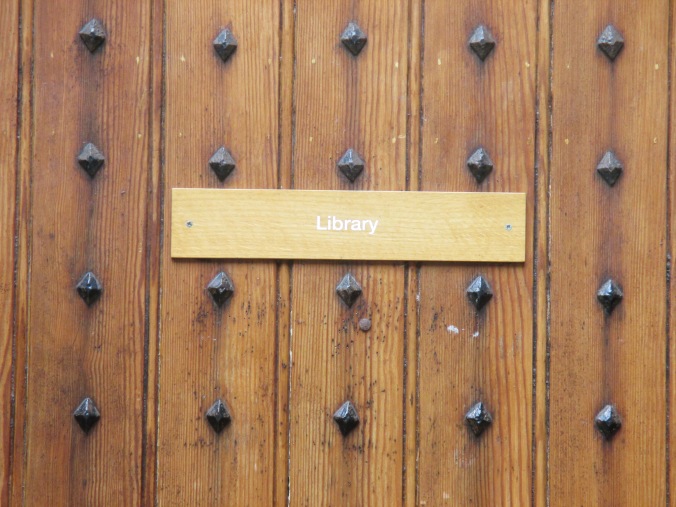
You guessed it…
Part of Edinburgh University, New College is its school of Divinity. Its library was once a church, as noted by the beautiful stained glass windows and general layout of the building. With over 250,000 items in its collection, the New College Library has one of the largest collections of a single subject. Its collections include rare books (over 90,000) and manuscripts.
One fun fact I learned was that its open access catalog was put together by its first female librarian. Girl power!
I enjoyed my tour of the New College Library. It was interesting to see so many ecclesial materials stored in one place and made me realize just how important it is to have a single subject library available for students. Divinity school students can find pretty much whatever they need within this collection without the burden of searching through several libraries.
Overall this trip was exciting, overwhelming, informative, and, of course, fun. I can honestly say that if someone had offered me the same program a few years ago, I probably would have been too scared to try, but I am so glad that I am the kind of person today who would jump into such an adventure both feet first. It was a month of discovery. I learned that I can visit a foreign country by myself (and live) and now I am already planning my next travel adventure (just need to pay this one off first…).
And now to sign off on this blog in the most “me” way as possible:
“Let us step into the night and pursue that flighty temptress, adventure.”
